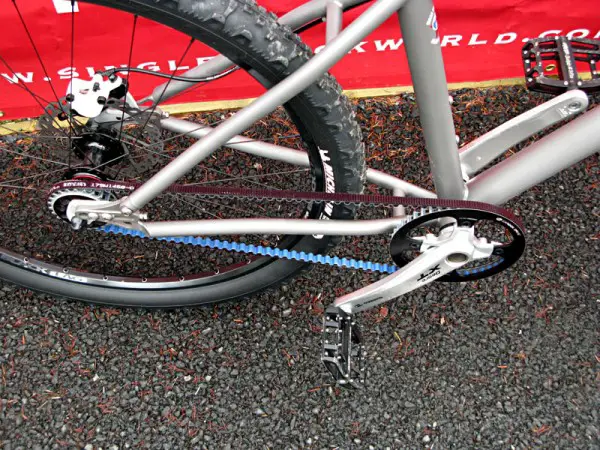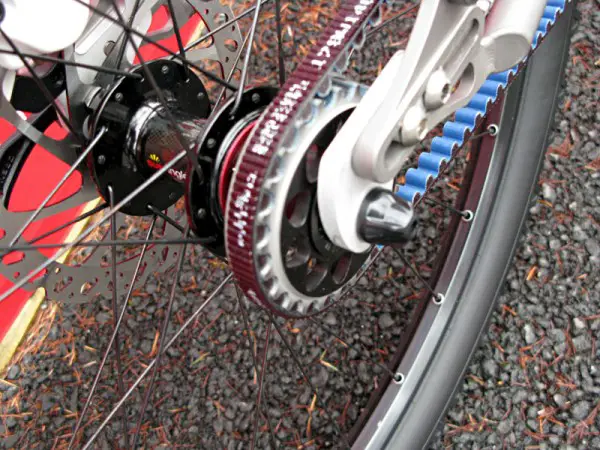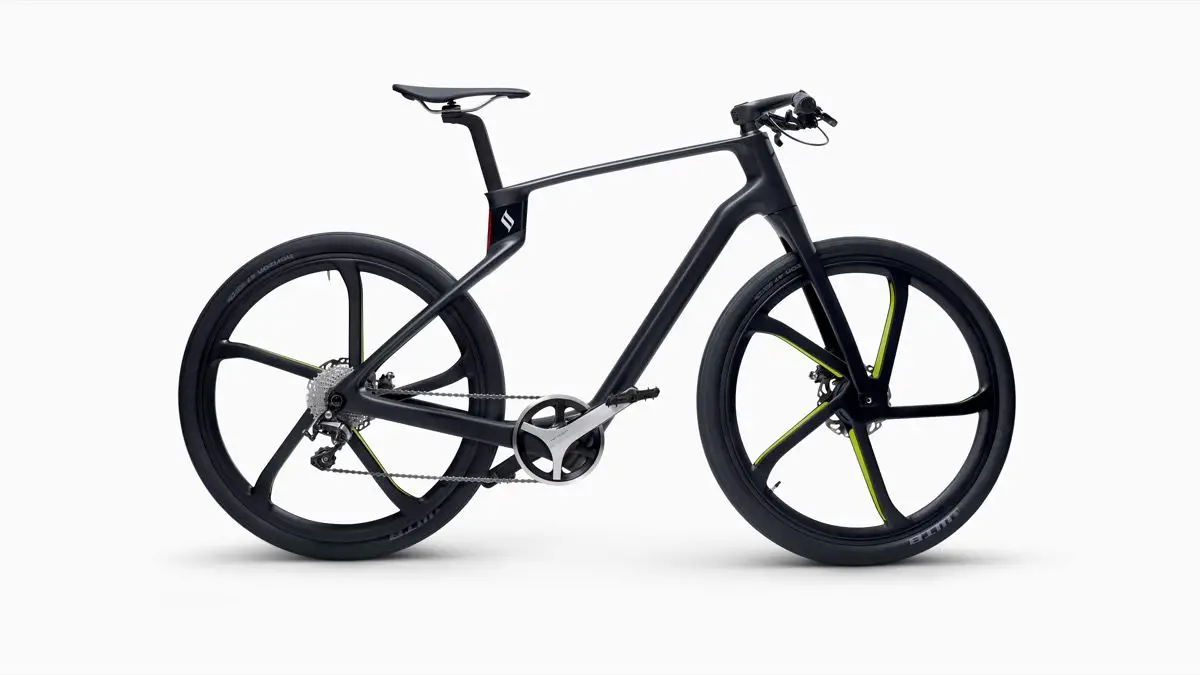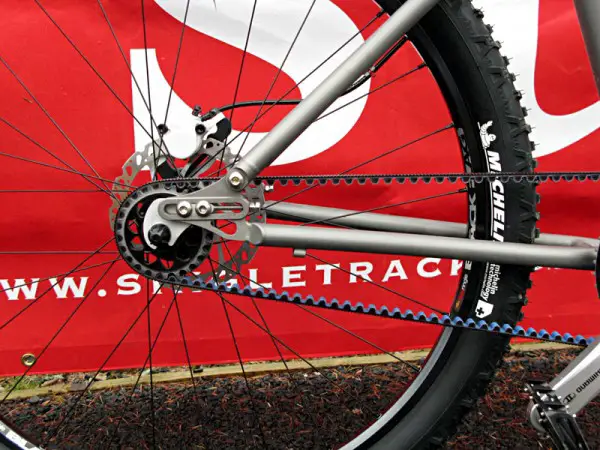A company called Superstrata is claiming to have produced the world’s first custom 3D printed unibody carbon fibre bike. That’s quite a niche – but is it a gap in the market?
Superstrata will be producing both the Terra and the Ion – the Ion being the eBike. Both are printed in a single pass of carbon fibre thermoplastic composite. There’s no shortage of hype around the tech being used to make these bikes, which are made ‘using next-generation thermoplastic materials, making it extremely impact resistant, yet remarkably lightweight’. These then are not carbon fibre bikes as we usually know them, layered together with epoxy.

The press release continues:
‘This bike was designed to leverage all the benefits of this new manufacturing technology to get the best of both worlds: strength and lightness’ said Bill Stephens, an award-winning bicycle designer and the creative force behind Superstrata.

We can’t comment on strength, but on weight they certainly claim some light numbers. A complete Ion eBike will apparently weigh in at 11kg, while a Terra will weigh 7.5kg. But, with a claimed 500,000 customised permutations to choose from, perhaps those weights are based on the skinniest or smallest of everything? The frame can be tailored to riders’ heights, weights, arm and leg lengths, riding positions and even preferred stiffness levels. Apparently you could even have the necessary adjustments made to accommodate larger than 40mm tyres – giving a little more than just light gravel potential.

Both the frame and fork are printed using the same unibody construction technique – separately of course, or you wouldn’t be able to steer! – meaning that both can be customised.
But what about the third part of the Keith Bontrager triangle, cost? Well, the Ion eBike will be $3,999 and the Terra $2,799. Not cheap, but not all that expensive for a custom frame. Perhaps a lot to spend on something with so much new technology in it, but then for some that’s likely part of the attraction.
Talking of attraction, it’s got quite the Buck Rogers aesthetic to both the Terra and the Ion. With a hub gear on the Ion eBike – the precise motor to be used is apparently still to be determined – and the standard 125 Wh battery, we’re promised that the Ion will look like it’s had a big meal, rather than being noticeably different from the Terra. If you upgrade to the larger 250 Wh battery, its belly will be a little bigger, with the downtube made larger to accommodate it. While it is removable for servicing, it’s not designed to be removed on a regular basis for charging etc.
What the ride quality is like remains to be seen, and whether this will be the Next Big Thing or even just a stepping stone on the way to a change in bicycle production methods remains to be seen. In a few years from now will we be looking on this as we currently look back at a GT Lobo? Will be be fondly reminiscing over the days when alloy was hydro-formed? Or will we still be joining metal tubes and carbon fibres together and waiting for 3D printing to offer something to compete with current bike manufacturing technology?
If you want to see one of these in the flesh, there will apparently be one on display in Selfridges in London later this month.
Comments (0)
Leave Reply
Post Comment



Articles like this have got to be comment bait…
Vertically compliant and laterally compliant
…call me when it’s in the shops….
I hope the designer has considered the ‘hierarchy of waste’ when putting this together, and we’re not about to engage a new manufacturing process for materials that can’t be reused or recycled.
I hope the Internet echo warrior realises, if they’re concerned about the recyclablity of an item which is likely to remain usable for a few thousand years they’ve missed the first step on the hierarchy of waste.
It’s probably going to be reusable as a bike frame long beyond your life time and that of your children. Recycling it is the least eco friendly option.
Being printed the production waste will be tiny. I’m not sure on the energy efficiency of printing vs digging bauxite out of the ground and turning it into a bike but I can’t imagine it being worse.
No dropper post option?
Very 20th Century.
No need to be snide, dangeourbrain. This particular internet eco warrior is a professional engineer of a few years and is fully conversant with the hierarchy of waste and efficiency of production methods. I very much doubt this bike will continue to be reused for the next thousand years; the bike industry is too subject to fashion for it to stay in use beyond a few decades. All technology is eventually disposed of and we, as engineers and designers, bear a responsibility to consider that.
A few decades ? Not even that.
Given the bike industry’s ever increasing change of ‘standards’ for every interface and moving part, it’ll be obsolete in 10 years.
Who out there is still using a 1987 Ti ‘bike for life’ bike as their main ride ? And how many are scrapped because the brakes are shiiiite, the BB welding has cracked, the head angle is too steep to ride downhill, they can’t get a new fork because it won’t fit, the hubs are a different width, and the rims are too small for any half decent tyres).
My bet ? It’ll have cracked at the seat post junction after 4 years.
Agree – I doubt a recycling method even exists for this.
So logically, you don’t make anything out of a “carbon fibre thermoplastic composite” (a “monstrous hybrid” in Cradle to Cradle lingo) until you are sure its geometry will be useful for the life of the material. Which is probably 500 years plus.
But most bike geeks buy a new frame when they take 0.5° off the head angle.
The Atherton bikes are better – those round carbon tubes could be removed and reused in many things.
No. The whole point is that this frame when obsolete or broken will end up in land fill for certain. A definite 1 shot item.
Whereas an obsolete or broken Alu or steel bike can be melted down and made into something else – with the 2nd, 3rd, 4th etc cycle being a lot less energy intense than the 1st smelting.
Also for Alu, much smelting is done using hydro power (exactly why aluminium smeting plants are sited next to hydro plants) so doesn’t involve extracting and/or burning oil to produce. Unlike Carbon fibre.
Realizing it probably won’t get built but if it did, just how much crap would end up on your water bottle from the back wheel?
But there is plenty of room for a mudguard in the rear!